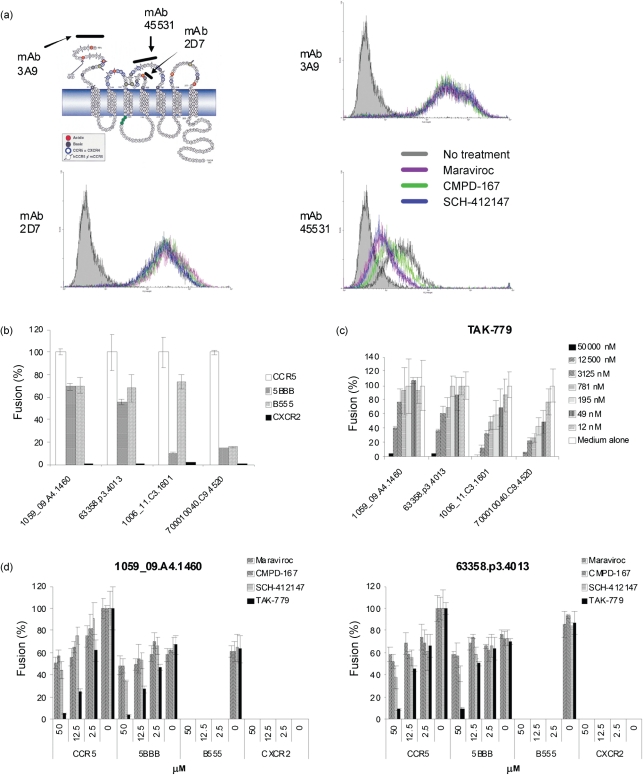Fig. 4.
Mechanisms of CCR5 inhibition and inhibitor resistance. (a) Binding epitopes of CCR5 inhibitors. CHO-CCR5 stable transfectants were treated with 1 μM of each respective CCR5 inhibitor for 1 h, washed extensively and stained with PE-conjugated anti-CCR5 mAb 3A9, 2D7, 45531 or with isotype-matched control IgG before analysis by flow cytometry. hCCR5, human CCR5; mCCR5, mouse CCR5. (b–d) Fusogenic activity of T/F HIV-1 Envs with CCR5/CXCR2 chimeras (b), with CCR5 in the presence of CCR5 inhibitor TAK-779 (c) and with CCR5/CXCR2 chimeras in the presence of the CCR5 inhibitor maraviroc, CMPD-167, SCH-412147 or TAK-779 (d). QT6 effector cells were prepared by infection with vTF1.1 for 1 h, followed by transfection with Env expression constructs. Target QT6 cells were transfected with CD4 and CCR5 or CCR5/CXCR2 chimera in pcDNA3, and a construct encoding luciferase under the transcriptional control of the T7 promoter. The effector and target cell populations were mixed at 16–18 h after transfection, and the luciferase activity of cell lysates was determined approximately 8 h later. In experiments using CCR5 drugs, target cells were pre-treated with serially diluted CCR5 inhibitor for 30 min before mixing. The fusogenic activity with CCR5 was arbitrarily set to 100 %. Data are representative of three independent experiments, with each determination performed in triplicate (mean±sd).

